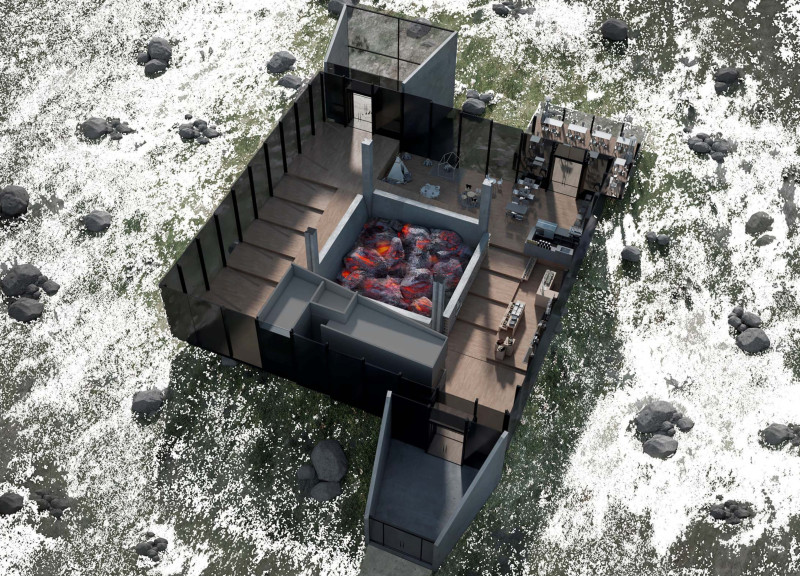5 key facts about this project
Sustainable design principles are at the core of this project, incorporating energy-efficient systems and environmentally friendly materials. Key features include the use of solar panels, reinforced concrete for structural support, and high-performance glass for insulation and energy efficiency. The combination of these elements creates a building that not only serves its immediate function but also emphasizes responsible architectural practices.
Integration with Local Geology and Innovative Materials
One of the unique aspects of this architectural design is its responsiveness to the local volcanic context. Expressive forms that draw inspiration from volcanic rock formations are evident throughout the facade and roof design. This approach creates a strong visual dialogue between the building and its surroundings.
The material choices further strengthen this connection. Reinforced concrete serves as the primary structural material, ensuring durability while echoing the landscape. The extensive use of glass not only enhances transparency but also minimizes the visual barrier between the interior and the volcanic terrain. Wooden accents provide warmth and texture, reinforcing the commitment to a natural aesthetic. Steel elements are incorporated for their structural properties, allowing for open and flexible interior spaces. The discrete use of sandwich panels on the roof aids in thermal insulation while maintaining a clean, streamlined appearance.
Strategic Spatial Organization and Flexibility
The interior layout is organized to facilitate various activities, ranging from exhibitions to community gatherings. The central atrium acts as a focal point, surrounded by multifunctional spaces that can adapt to different user needs. This flexible design promotes interaction among visitors while allowing for diverse programming opportunities. The thoughtful arrangement of spaces, coupled with high ceilings and large windows, contributes to an open and inviting atmosphere.
The project also employs contemporary architectural techniques, such as passive solar design and natural ventilation strategies. These practical innovations reduce reliance on artificial lighting and climate control systems, contributing to overall energy efficiency. The commitment to sustainability is reflected in both the design approach and material selection, which align with modern architectural practices aimed at minimizing environmental impact.
This architectural design project exemplifies a thoughtful integration of form, function, and sustainability. For a comprehensive understanding of the project, including detailed architectural plans, sections, and designs, exploring the full presentation will provide valuable insights into the architectural ideas behind this compelling structure.


























